You are using an out of date browser. It may not display this or other websites correctly.
You should upgrade or use an alternative browser.
You should upgrade or use an alternative browser.
Americain Indian Metal Artifacts - Has Anybody Picked up Them?
- Thread starter SuchMuch
- Start date
Muddyhandz
Bronze Member
- Jul 1, 2012
- 1,226
- 1,955
- Detector(s) used
- Fisher's 1266X, 1270X & 1280X
- Primary Interest:
- All Treasure Hunting
11KBP
Hero Member
Iron points are mostly made from barrel hoops (strapping) and were made at fur trade posts/forts by traders or made by the Natives themselves.
These are all from one site.....
You can tell some of the Native made ones as they follow ancient styles that you would find with archaic copper.
This site only contained a few kettle points (at top of first photo) and the rest iron but luckily the soil was very kind to these.
Great collection of metal points Muddyhandz.

In the Central Great Plains region I have found a number of iron points that were identifiable but not salvageable as they flaked and crumbled apart upon excavation, this is usually the case of most all iron points found on sites that are being farmed over, however points found on the same sites made of brass are most always in good condition. I hunt mostly agricultural ground and for this reason brass points make up the majority of my metal point finds. Well drained unbroken ground where I hunt will produce salvageable iron points but they oftentimes exhibit some serious pitting. The farther west you go the more arid it becomes and iron points can be found in much better condition, however, because they are made of iron their existence is still limited unless someone finds and preserves them. Unlike their chipped stone counterparts the iron arrow points which are not found and saved will eventually oxidize into a small unrecognizable piles of rusted particles.
SweepNbeep
Full Member
- Mar 3, 2017
- 190
- 294
- Detector(s) used
- Garrett AT Pro & Ace 400
- Primary Interest:
- Other
This site only contained a few kettle points (at top of first photo) and the rest iron…
Thanks a lot Muddyhandz. Now I'm going to have to dig every last iron signal I get.

Last edited:
Buckleberry
Hero Member
- Sep 4, 2010
- 639
- 795
Yep, you'd certainly have to be 'literate' in copper, before bronze...I bet Otzi the Iceman could tell us a thing or two about the Chalcolithic Period (European Copper Age)....and the bronze age in Europe was preceded by their own Copper age....
Buckleberry
Hero Member
- Sep 4, 2010
- 639
- 795
That's just a fantastic site collection, you're very lucky to be able to find those, as I'm sure you know.Iron points are mostly made from barrel hoops (strapping) and were made at fur trade posts/forts by traders or made by the Natives themselves.
I'm not even going to post what I got because it would take a long time but I did happen to take this photo a few weeks ago for a friend.
These are all from one site.....
View attachment 1425315
You can tell some of the Native made ones as they follow ancient styles that you would find with archaic copper.
View attachment 1425317
This site only contained a few kettle points (at top of first photo) and the rest iron but luckily the soil was very kind to these.
I've got more info to add to this thread at a later date.
Good topic!
Do you have any pics of the site and how deep are they found...surface?
SuchMuch
Jr. Member
- Thread starter
- #27
Bronze age was everywhere except Americas.Yep, you'd certainly have to be 'literate' in copper, before bronze...I bet Otzi the Iceman could tell us a thing or two about the Chalcolithic Period (European Copper Age).
Thanks everyone for sharing their finds! Has anybody found copper axes? I'm sure there should be larger copper items
old digger
Gold Member
- Jan 15, 2012
- 7,502
- 7,298
- Detector(s) used
- White's MXT
- Primary Interest:
- All Treasure Hunting
Cool collection!  I have one metal trade point (Montana), and one copper point that I found at John's village site in North Dakota.
I have one metal trade point (Montana), and one copper point that I found at John's village site in North Dakota.
Last edited:
Muddyhandz
Bronze Member
- Jul 1, 2012
- 1,226
- 1,955
- Detector(s) used
- Fisher's 1266X, 1270X & 1280X
- Primary Interest:
- All Treasure Hunting
Thanks for the interest! As for this site, most of it is in a cultivated field but there's some bush areas surrounding that had Native camps here and there.
There's about another 30 iron points (not photographed) from the plowed area that are more corroded, bent, or broken. Most of the points in the picture come from the bush area.
This post existed for a decade during the late 18th century and had very little modern activity outside of farming and hunting.
Of course in the early days of my sites, the nonferrous signals and bigger iron gets plucked out first and then I start digging almost everything as the site thins out.
I set my 1266X to accept all-metal but flip between the dual disc. to determine the size of iron artifacts.
In most cases, I can tell if the signal is different than a typical nail as these points will give a more expanded signal and most nails give a double blip but not always!
As I dig more of the less desirable signals, a deep iron point on it's edge (not flat) will sound similar to a nail.
I like to dig every signal at the Native camps as there's less nails (away from the post/fort) and everything has been worked. Even the nails have been modified for a special use.
Imagine all the stone lithics..... micro-blades, scrapers, awls, knives, saws, etc. converted into scrap metal versions. Even iron scrap trim bits have been utilized!
Sure the ability to flint knap almost disappeared by this period but that doesn't mean they didn't continue to fashion tools for every day purposes, they just used scrap metal.
Most Native made points were cut out of the scrap by taking a wedge/chisel and hammering out the shape with the back of a trade axe.
Then they used one of the most important tools (and under-rated) of the fur trade period.....a file to put an edge on blades or points and to finish it. They used a file to work on many different items.
The thing about fur trade collectors is that most focus on European made trade goods and overlook the amazing Native made tools and adornment that are often one of a kind pieces.
Although it's true they lost a lot of their ancient knowledge from assimilation, I have found comfort in digging up 18th century iron implements like these below, that are EXACTLY the same pattern as prehistoric copper points made thousand of years earlier......
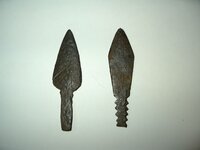
It's almost like that knowledge is embedded in their DNA!
Well, my two fingers are getting sore from all this typing. Lol. I'd love to show more of what I've been blabbing about again.
Cheers,
Dave.
There's about another 30 iron points (not photographed) from the plowed area that are more corroded, bent, or broken. Most of the points in the picture come from the bush area.
This post existed for a decade during the late 18th century and had very little modern activity outside of farming and hunting.
Of course in the early days of my sites, the nonferrous signals and bigger iron gets plucked out first and then I start digging almost everything as the site thins out.
I set my 1266X to accept all-metal but flip between the dual disc. to determine the size of iron artifacts.
In most cases, I can tell if the signal is different than a typical nail as these points will give a more expanded signal and most nails give a double blip but not always!
As I dig more of the less desirable signals, a deep iron point on it's edge (not flat) will sound similar to a nail.
I like to dig every signal at the Native camps as there's less nails (away from the post/fort) and everything has been worked. Even the nails have been modified for a special use.
Imagine all the stone lithics..... micro-blades, scrapers, awls, knives, saws, etc. converted into scrap metal versions. Even iron scrap trim bits have been utilized!
Sure the ability to flint knap almost disappeared by this period but that doesn't mean they didn't continue to fashion tools for every day purposes, they just used scrap metal.
Most Native made points were cut out of the scrap by taking a wedge/chisel and hammering out the shape with the back of a trade axe.
Then they used one of the most important tools (and under-rated) of the fur trade period.....a file to put an edge on blades or points and to finish it. They used a file to work on many different items.
The thing about fur trade collectors is that most focus on European made trade goods and overlook the amazing Native made tools and adornment that are often one of a kind pieces.
Although it's true they lost a lot of their ancient knowledge from assimilation, I have found comfort in digging up 18th century iron implements like these below, that are EXACTLY the same pattern as prehistoric copper points made thousand of years earlier......

It's almost like that knowledge is embedded in their DNA!
Well, my two fingers are getting sore from all this typing. Lol. I'd love to show more of what I've been blabbing about again.
Cheers,
Dave.
Cachefind09
Full Member
Cachefind09
Full Member
Cachefind09........That is a rare French Spontoon Tomahawk, not many of them were made compared to the blade and spike type. It is worthy of restoration or some way of removing the heavy rust. Great Find!
Thank you so much for the information Rege-Pa. So do you think this was used by the NA or by the European settlers? I don't really know if it can be restored because it is so deeply rusted into the metal and if you were to remove the rust there wouldn't be much left of it. I accidentally dropped it after picking it up and the bottom barb broke off when it hit the ground. That's how brittle it has become after spending all these years in the ground.
Cachefind09.........If you knew how many heads that hawk split you might have reserves on keeping it. It may have been carried by a French (Courrier du bois) a runner of the forest but most likely was carried by a Mingo or Shawnee brave who were allied with the French and would date from 1650 up to 1765 with the last battles of Pontiacs War.
Did you keep the barb that broke off? I would love to find one of those.
Did you keep the barb that broke off? I would love to find one of those.
Cachefind09
Full Member
Cachefind09.........If you knew how many heads that hawk split you might have reserves on keeping it. It may have been carried by a French (Courrier du bois) a runner of the forest but most likely was carried by a Mingo or Shawnee brave who were allied with the French and would date from 1650 up to 1765 with the last battles of Pontiacs War.
Did you keep the barb that broke off? I would love to find one of those.
Again, thanks for the information Rege-Pa. I have often wondered about what such a tool like this would be used for. The Shawnee had a large presence in the area I live with the Shawnee village of Old Town and the site of the battle of George Rogers Clark being not too far away. The local high school here is named Shawnee and their mascot is the Shawnee warrior. I did try to find the barb when it broke off but it got last in the dirt. That would have been a good time to have a metal detector.
Buckleberry
Hero Member
- Sep 4, 2010
- 639
- 795
Geographically that would be inaccurate as most of the world did not experience the Bronze Age.Bronze age was everywhere except Americas.
11KBP
Hero Member
The thing about fur trade collectors is that most focus on European made trade goods and overlook the amazing Native made tools and adornment that are often one of a kind pieces.
Excellent point muddyhandz
Recycled European trade goods modified by the Native Americans to meet their needs are certainly more interesting and are seldom seen in collections.
Many artifact hunters/collectors do not realize the actual rarity of the historic period metal points. They were made and used during a very short window of time and are much, much less common than stone arrow points. In the Great Plains region this window wasn’t much more than a hundred years long.
Speaking specifically of chipped stone arrow points, the bow was in use for well over a thousand years before the short lived metal points showed up. I have no clue what the ratio might be but there are a very large number of stone arrow points for every one Native-made metal arrow point.
If it wasn’t for my metal detector there would not be any in my collection as that is the only way I can find them. In the below image note the two metal points at the far right that were not finished.
Attachments
Coyote Hunter
Tenderfoot
Thanks SweepNbeep, I'm new to this sport but live in a place that makes it easy to while away the days with my detector on our little farm.
Hot diggity
Sr. Member
- Nov 19, 2014
- 441
- 313
Love those unfinished arrowheads! Haven't seen any of those before. Very cool!
kansa54
Full Member
- Aug 12, 2013
- 234
- 322
- Detector(s) used
-
Garrett 1500 Tesoro Vaquero Tesoro Silver Sabre micro max
Makro Racer 2 Makro Multi Kruzer
- Primary Interest:
- Relic Hunting
Top Member Reactions
-
 2350
2350 -
 1127
1127 -
 1048
1048 -
 887
887 -
 824
824 -
 797
797 -
 753
753 -
 751
751 -
 606
606 -
 500
500 -
 491
491 -
 473
473 -
 465
465 -
 423
423 -
 385
385 -
 383
383 -
 381
381 -
 381
381 -
 376
376 -
O
375
Users who are viewing this thread
Total: 2 (members: 0, guests: 2)
Latest Discussions
-
San Diego{ 91 7597780800 } Love ProBLem SoluTIoN Baba ji Nanded
- Latest: ramankour457
-
india_{ 91 7597780800 } Online Love Marriage Specialist Baba Ji Ajmer
- Latest: ramankour457
-
THE Random Chat Thread - AKA "The RCT" - No shirt or shoes required - Open 24 / 7
- Latest: Small Adventures
-
-



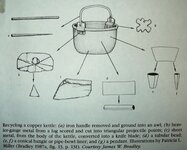

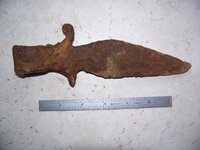
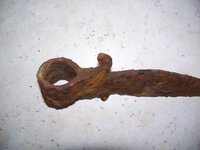
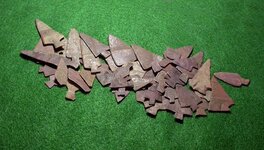
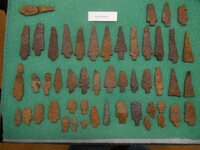
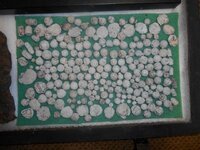
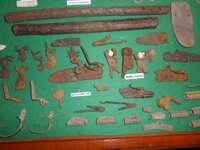
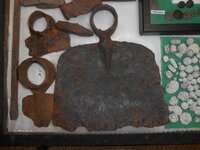
 Are you serious
Are you serious 
